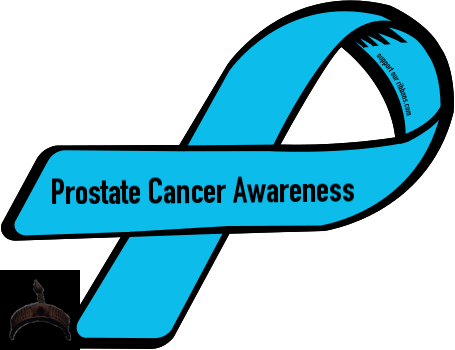Cancerous cells – Cancer is a wide term, which describes the condition that results when cellular changes cause the uncontrolled growth and division of cells. A cell receives instructions to die so your body can change it with a more recent cell that functions better. Cancerous cells lack the components that instruct them to prevent dividing and dying. Consequently, they develop in the torso, using oxygen and nutrients that will usually nourish other cells.
Cancerous cells could form tumors, impair the defense mechanisms and cause other changes that prevent the human body from functioning regularly. Cancerous cells may come in one area and then spread via the lymph nodes. They are clusters of immune cells located throughout the entire body.
In accordance with WHO, the global cancer burden is estimated to possess increased to 18.1 million new cases and 9.6 million deaths in 2018. One in 5 men and one in 6 women worldwide develop cancer throughout their lifetime and one in 8 men and one in 11 women die from the disease.
Lifestyle factors that can promote the development of Cancerous cells.
You can find so many risk factors accountable for causing cancer. Besides biological, environmental, and occupational risk factors, lifestyle-related factors also play a substantial role in the development of numerous forms of cancer.
Lots of the factors potentially influencing our potential for developing cancer result from our lifestyle and our personal choices. Which means that we’ve some control over our experience of these factors. Numerous modifiable lifestyle factors accountable for causing cancer are the following:
Overweight and obesity –
Globally, it’s estimated that 3.6% of new cancers in adults are owing to excess body weight. Greater or excess body fat has been identified as a probable reason behind gallbladder, and advanced prostate and ovarian cancers. There is convincing evidence that abdominal obesity increases the chance of colorectal cancer and endometrial cancer. It is just a probable reason behind pancreatic cancer. Adult weight gain has been identified as another probable reason behind postmenopausal breast cancer. So, maintaining a wholesome weight throughout life has clear health advantages and might have an essential protective effect against cancer.
Physical inactivity –
Globally, it’s been estimated that 135,000 deaths from cancer every year are owing to physical inactivity. Physical exercise protects against certain cancers and also limits weight gain, itself a reason behind some cancers.
To cut back the chance of cancer, adults should accumulate 150 to 300 minutes of moderate-intensity physical exercise. 75 to 150 minutes of vigorous-intensity physical exercise, or an equivalent mixture of both moderate and vigorous activities, each week. Activity at the top end of the scale i.e. 300 minutes of moderate / 150 minutes of vigorous is needed for the prevention of unhealthy weight gain and some cancers. It can also be recommended to minimize the total amount of time spent in prolonged sitting and to split up long periods of sitting normally as possible.
Diet can also Promote Development of Cancerous cells-
Worldwide, it’s been estimated that 374,000 cancer deaths every year may be caused by low fruit and vegetable intake.
A different diet of nutritious foods, including vegetables, fruits, grains, dairy food, lean meat, fish, and water. Limiting the intake of foods with saturated fat, added salt and added sugars are recommended. The typical dietary guidelines recommend consuming five servings of vegetables and two servings of fruit daily. Limiting meat consumption to 455 g of lean meat each week, i.e. around 65 g per day.
Tobacco –
WHO identifies tobacco use because the single greatest avoidable risk factor for cancer mortality worldwide. It estimates tobacco use to cause around 1.5 million cancer deaths each year.
Tobacco smoke has an impact on the wider population through the experience of second-hand tobacco smoke. There’s also a risk of third-hand smoke. It is the residue of nicotine and other chemicals in tobacco, which clings to clothes, furniture, drapes, walls, bedding, carpets, dust, vehicles. Also, sticking to other surfaces long after smoking has stopped. Many people are subjected to these chemicals by touching contaminated surfaces or breathing in the off-gassing from these surfaces.
Quitting smoking reduces the chance of lung and other major cancers. Five years after quitting smoking, the chance of mouth, throat, esophageal, and bladder cancers is halved. The chance of dying from lung cancer drops by half after 10 years.
Quitting smoking also can donate to both short and long-term improvements in health. Including a fall in heartbeat and blood pressure, improved circulation and lung function. Also reduced threat of coronary cardiovascular disease and stroke. WHO reports that people of all ages, who’ve already developed smoking-related health conditions, also can benefit by quitting smoking.
Alcohol –
WHO has estimated that excess alcohol consumption is accountable for 351,000 cancer deaths internationally each year. The increased threat of cancer commences at a low level and increases with higher quantities of alcohol consumption. When taken together, tobacco smoking and alcohol interact synergistically to boost the incidence of cancers at the top of the gastrointestinal tract. Generally, it is known as safe to limit consumption to only two drinks for guys and one drink each day for women.
UV radiations –
In accordance with WHO, there have been 65,000 melanoma-related deaths internationally in 2000. There’s strong evidence that UV-emitting tanning devices (solaria) cause melanoma of your skin and eye and are positively connected with squamous cell skin carcinoma. Increased melanoma risk is connected with solaria use before age 30. To be able to reduce UV exposure and promote the utilization of sunscreen and protective attire an alteration of our attitude is required.
Infections –
Globally, an estimated 16.1% of new cancers are caused by infections. However, estimates vary greatly between regions. Based on the World Cancer Report 2008, human papillomavirus, helicobacter pylori, and hepatitis B and C viruses have already been identified because the principal infectious agents, accounting internationally for 6.1%, 5.4%, and 4.3% of cancer cases respectively. They cause together 1.9 million cancer cases worldwide.
Therefore, taking adequate preventive measures should go quite a distance in steering clear of the development of several cancers.
Underneath line –
It’s been observed worldwide that incidences of forms of cancer have already been steadily increasing, which is why a big amount of risk factors are responsible. Regardless of other risk factors, our lifestyle is accountable for the development of various kinds of cancers. It’s worth knowing that many of our lifestyle factors are modifiable. By modifying them appropriately, we could stop the development of several cancers.
 Ọmọ Oòduà Naija Gist | News From Nigeria | Entertainment gist Nigeria|Networking|News.. Visit for Nigeria breaking news , Nigerian Movies , Naija music , Jobs In Nigeria , Naija News , Nollywood, Gist and more
Ọmọ Oòduà Naija Gist | News From Nigeria | Entertainment gist Nigeria|Networking|News.. Visit for Nigeria breaking news , Nigerian Movies , Naija music , Jobs In Nigeria , Naija News , Nollywood, Gist and more









